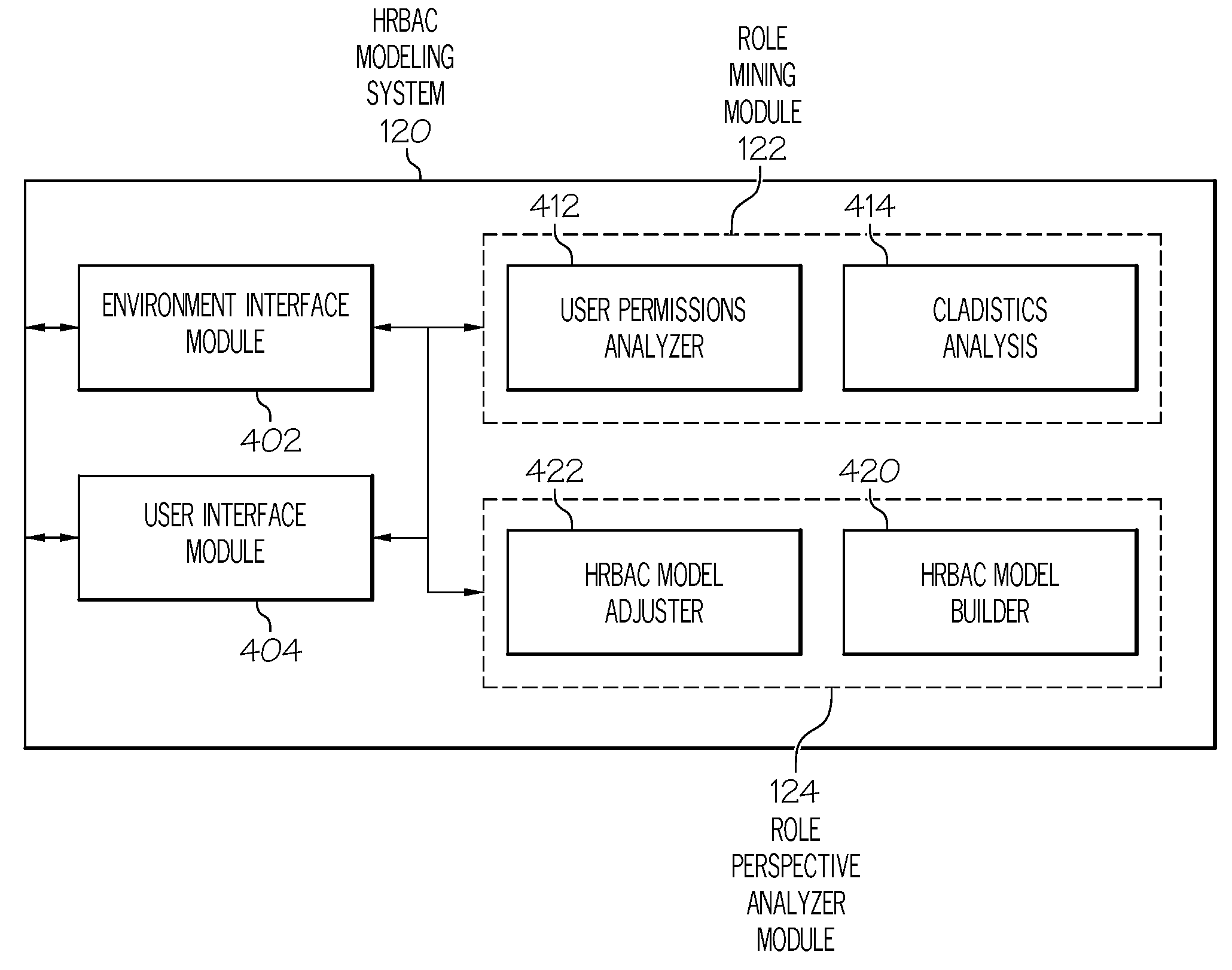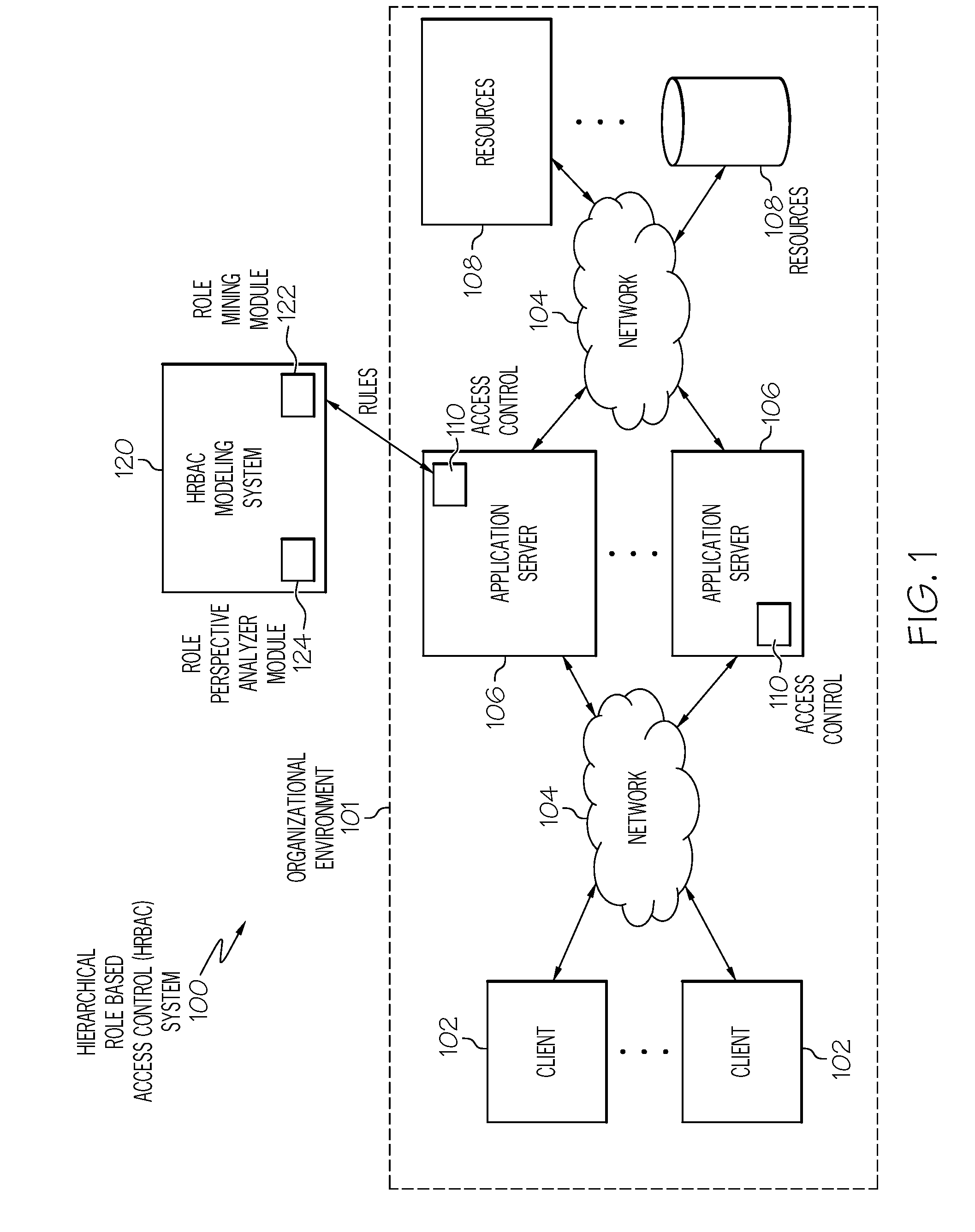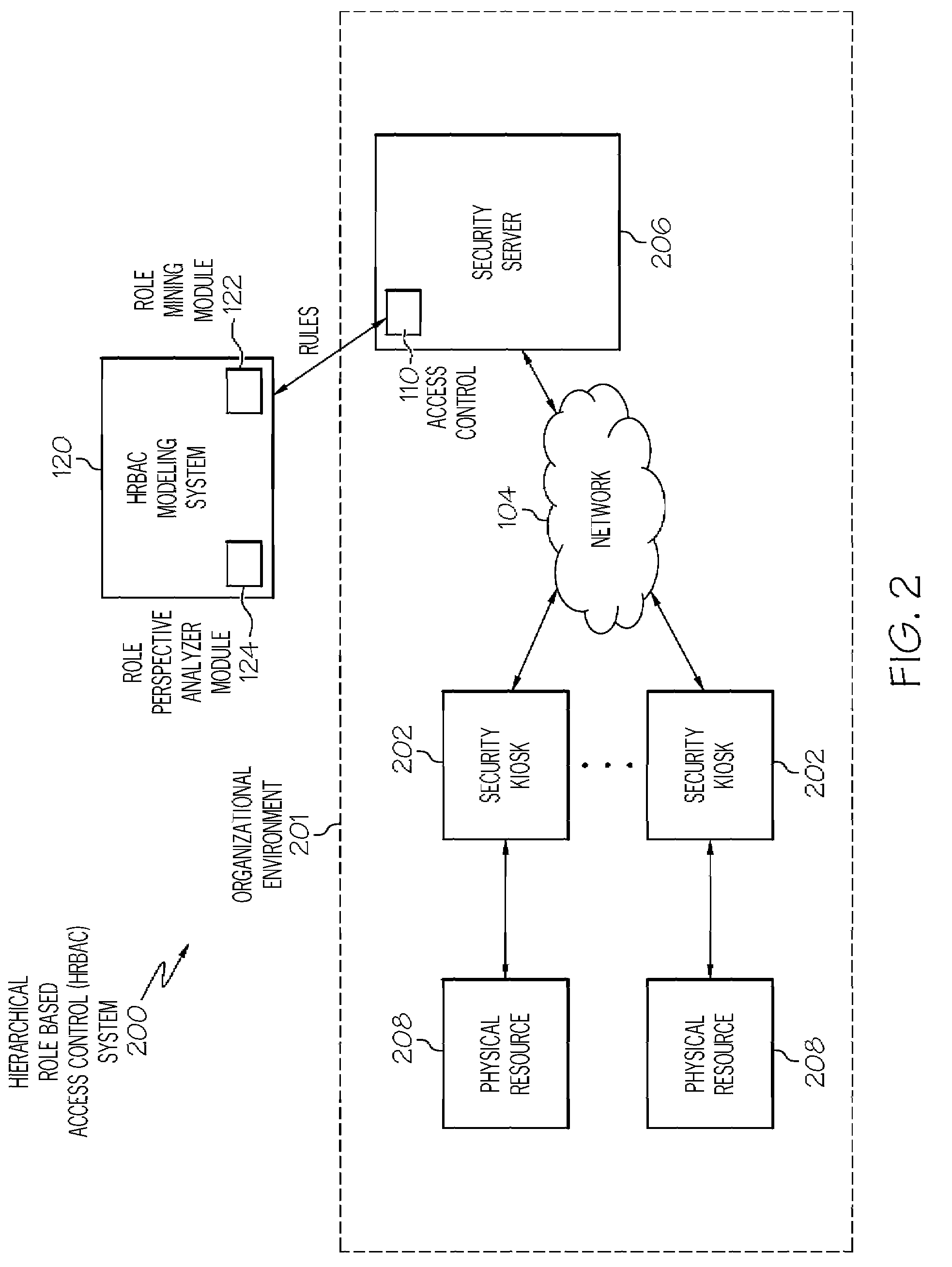Automated organizational role modeling for role based access controls
a role modeling and role technology, applied in the field of data processing systems, can solve the problems of increasing complexity and power of computer systems, increasing the complexity of computing systems, and requiring significantly more time and effort to create the development of rbac models,
- Summary
- Abstract
- Description
- Claims
- Application Information
AI Technical Summary
Benefits of technology
Problems solved by technology
Method used
Image
Examples
Embodiment Construction
[0018]The following is a detailed description of example embodiments of the invention depicted in the accompanying drawings. The example embodiments are in such detail as to clearly communicate the invention. However, the amount of detail offered is not intended to limit the anticipated variations of embodiments; on the contrary, the intention is to cover all modifications, equivalents, and alternatives falling within the spirit and scope of the present invention as defined by the appended claims. The descriptions below are designed to make such embodiments obvious to a person of ordinary skill in the art.
[0019]Generally speaking, systems, methods and media for automatically generating a role based access control model (RBAC) for an organizational environment with a role based access control system such as a hierarchical RBAC (HRBAC) system are disclosed. Embodiments may include a method for generating an RBAC model. Embodiments of the method may include accessing existing permissio...
PUM
 Login to View More
Login to View More Abstract
Description
Claims
Application Information
 Login to View More
Login to View More - R&D
- Intellectual Property
- Life Sciences
- Materials
- Tech Scout
- Unparalleled Data Quality
- Higher Quality Content
- 60% Fewer Hallucinations
Browse by: Latest US Patents, China's latest patents, Technical Efficacy Thesaurus, Application Domain, Technology Topic, Popular Technical Reports.
© 2025 PatSnap. All rights reserved.Legal|Privacy policy|Modern Slavery Act Transparency Statement|Sitemap|About US| Contact US: help@patsnap.com



